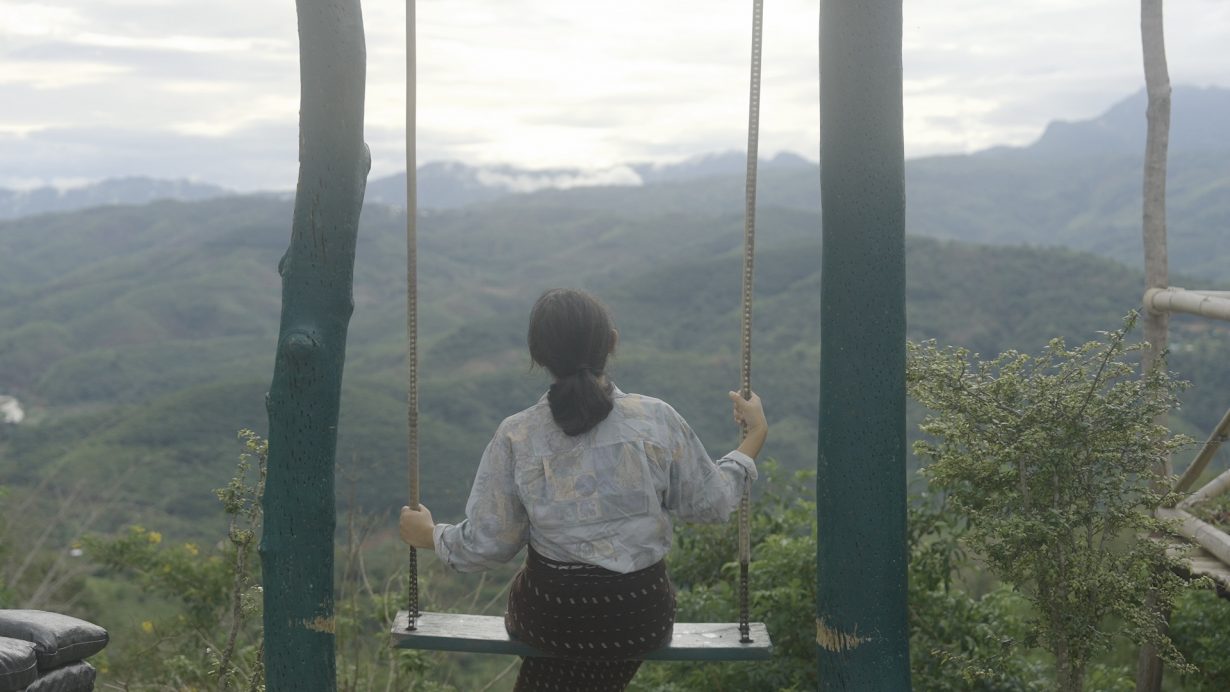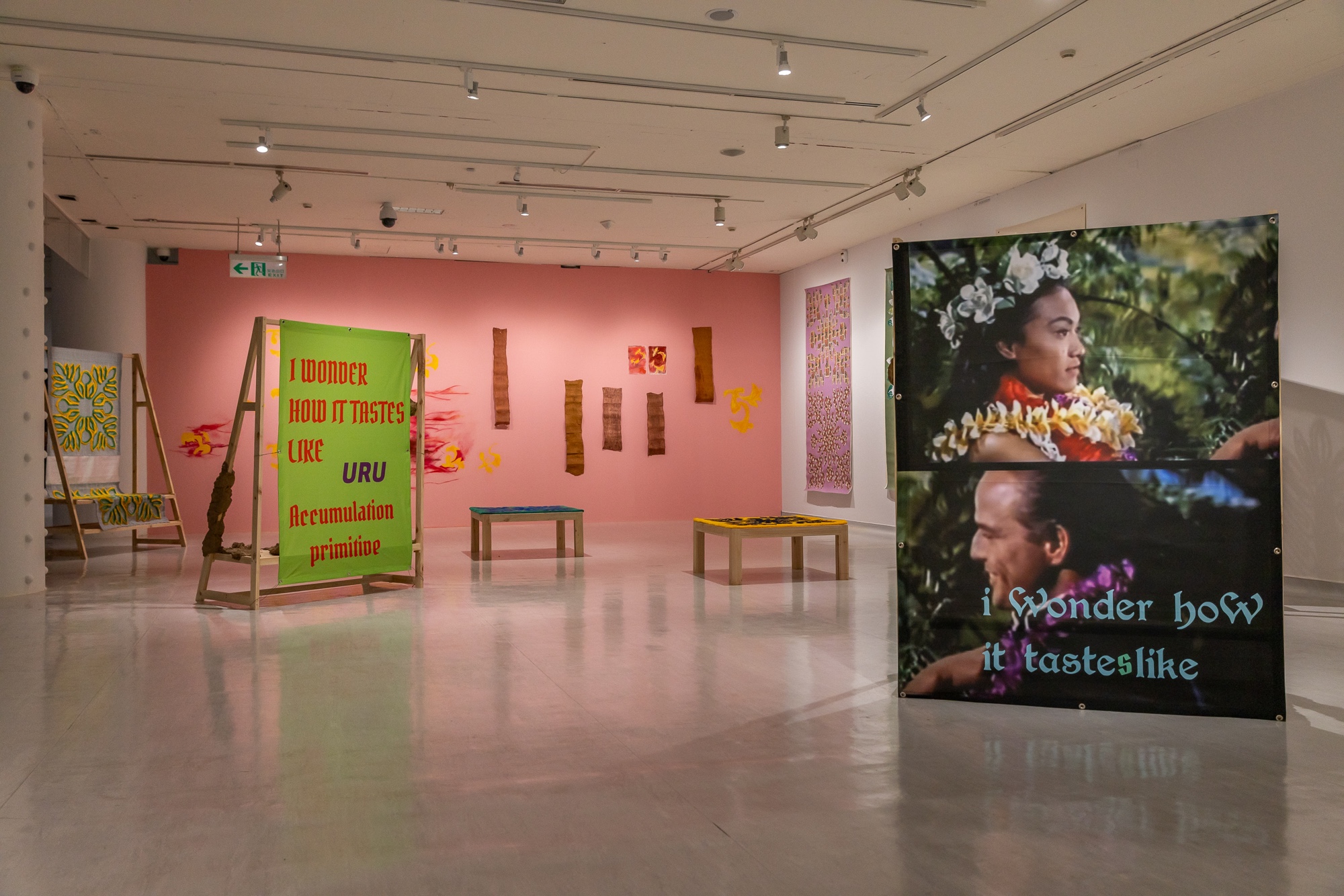The cerebrally dense works at the latest Asian Art Biennial take breathing as a starting point to explore collective ways of living, dreaming and resisting
How to Hold Your Breath is curated by a team of five, led by Taiwanese curator Fang Yen Hsiang, and comprising Paris-based Anne Davidian, Filipino artist and researcher Merv Espina, Singapore-based Haeju Kim and Istanbul- and Paris-based Asli Seven. It forgoes overelaborate framing, choosing instead to introduce the work of 35 artists with sparse cues: the text in the handout references the longest voluntarily held breath, nods to a yoga breath-control technique used to achieve altered states of mind and cites the 1986 pop song Take My Breath Away.
One of the more compelling ideas within this remit is that holding one’s breath can be viewed as an act of both survival and resistance – as seen in Pak Sheung Chuen’s Breathing in a House (2006), located just inside the exhibition’s entrance. This six-minute video quietly documents the artist’s Kafkaesque attempt to fill a tiny rented room with clear plastic bags inflated by his own breath. Meditating on the subtle moment between his inhales and exhales, and the absurdity of watching these breaths materialise in space, the work points to an existential struggle and serves as a more direct visual substitute for the curatorial introduction. What later becomes apparent is that Pak’s work also behaves as the metaphorical deep breath visitors need to take before plunging into the ideologically dense and research-heavy works that follow.

Punctuating the exhibition are two artist curated sections: the first, a presentation by Berlin- and Beruit-based Marwa Arsanios and South Taiwanese community-research collective Kuanntian Studio, features Arsanios’s series of wall-hung illustrations Resilient Seeds (2016), a visual inquiry into the ways in which plants and animals survive in increasingly polluted environments in Beirut; alongside this, a wall pasted with printed documents chronicles local environmental events, in front of which a round table is installed and used by Kuanntian Studio to host forums and discussions with the aim of sharing local perspectives on global environmental issues. In the same gallery space visitors find Nathalie Muchamad’s Breadfruit, Mutiny and Planetarity (2024), which features handcrafted fabric banners affixed to freestanding wooden frames that explore the history and exploitation of the titular crop, linking Taiwan to Polynesia through Western colonial trade routes; meanwhile Noor Abed’s A Night We Held Between (2024), the third in a trilogy of films, featuring figures performing rituals in the Palestinian landscape accompanied by a soundtrack of the popular ballad Song for the Fighters, plays nearby. The overall effect of the works in this section is one of communal solidarity, offering a reflection on how traditional knowledges might provide forms of resistance and resilience in an increasingly precarious world.
The second artist-curated section, conceived by US-based Armenian Mashinka Firunts Hakopian, explores alternative technofutures through the looming lens of AI via a series of academic books on display, which sets the context for her adjacent video, One Who Looks at the Cup (2024). Made in collaboration with film director and artist Atlas Acopian and musician and composer Lara Sarkissian, the work documents Hakopian’s machine learning algorithm trained on Armenian traditions of reading fortunes in coffee grounds. In this section, other high-tech conundrums abound: Yehwan Song’s (Whose) World (How) Wide Web (2024), a video installation made of screens attached to a cardboard structure forming a kind of theatre, features a giant Korean computer keyboard and browser windows that shift between Korean and English language settings. The work hints at how the internet is an English-dominated environment and alludes to its colonisation of the digital realm. And in Cetus Kuo Chin-Yun’s nearly 90-minute video Because Watching Pacifies (2024), visitors are confronted with the history of two military dependents’ villages (set up by the Kuomintang for surveillance purposes). One is located in a mountainous region of Taiwan, and the other in the northern Thai borderlands. The story is narrated by a local Akha woman from the latter’s highlands, whose sister and neighbours were conscripted by Kuomintang guerrillas during the 1950s. Looking at how borders of modern nation-states are drawn and made impassable, the film finds its most compelling element in exploring the less-examined link between racial capitalism in Taiwan and Cold War displacement: throughout the video the Akha woman is increasingly concerned that her missing sister may have been caught up in an illegal Southeast Asian migrant workforce located in Taiwan’s mountains.

Just when you’re about to conclude that the thematic focus remains elusive, the closing section of the exhibition wraps up its theme in a more concrete way, evoking the sensations of breathing – and breath-holding – as a somatically releasing experience: Trương Quế Chi and Nguyễn Phương Linh’s kinetic installation Sourceless Waters: White. Shadows (2024) features a vibrating platform filled with over 70 basketballs, atop which a large sheet of white cloth rises and falls in a breathlike rhythm, the movements evoking a feeling that’s at once soothing and agitative. Saodat Ismailova’s three-channel video builds on her ongoing research into a walnut forest in Kyrgyzstan – which emits a high quantity of carbon dioxide capable of inducing hallucination (Arslanbob, 2024–). Here, sharing the same hallucinogenic air becomes an alternative way of dreaming and coexisting, gently guiding visitors out of the cerebrally dense works that make up the majority of the exhibition and firmly back into their bodies – just in time to take another gulp of air.
2024 Asian Art Biennial: How to Hold Your Breath at National Taiwan Museum of Fine Arts, Taichung, 16 November – 2 March
From the Spring 2025 issue of ArtReview Asia – get your copy.
